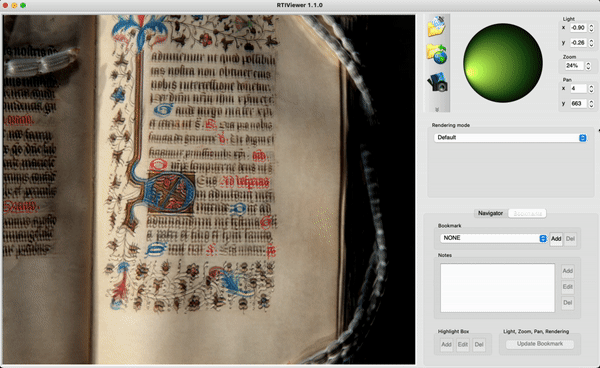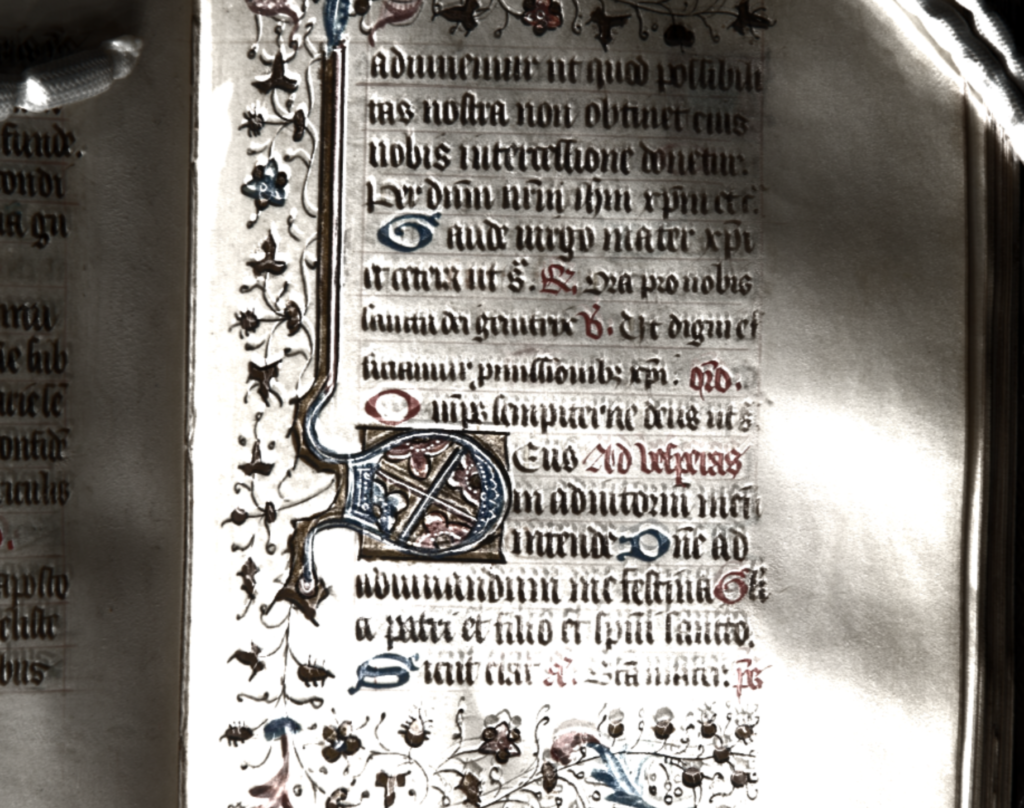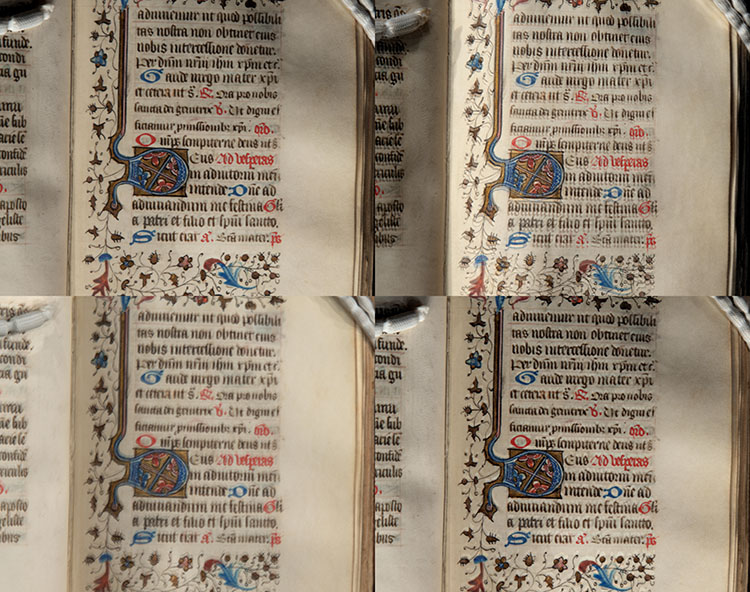Conjuring the Light and Shadow in the Past: The Reflectance Transformation Imaging (RTI) Workshop
The Reflectance Transformation Imaging (RTI) technique opens up new horizons for the close study of the materiality of palpable objects like manuscripts. It reveals things we cannot easily observe with our very eyes, such as dry-point writing, ruling, and hair follicles.
Between 22 and 23 April in the Napier Reading Room in Martyrs Kirk, several people at St Andrews participated in the two-day RTI workshop organised by Prof Kathryn Rudy (Art History), Prof. Margaret Connolly (English & History), and Mrs Rachel Hart (University of St Andrews Libraries and Museums), and led by Bill Endres, a digital imaging specialist at the University of Oklahoma.
I was grateful to have the opportunity to look at a Book of Hours from University Collections (msBX2080.F6), for which see the digitised version here: msBX2080.F6).
This Book of Hours is a single volume with blind-tooled calfskin binding, written in French and Latin in the mid-fifteenth century. The maker and initial owner of the manuscript are unknown, though it would have been used in France as the calendar is written in French.
I wondered what I would discover from the open page of the Book of Hours with the vegetal border and the initial decorated with gold if I had a look at this object through RTIViewer. I shot about 45 photographs of this opening of the Book of Hours with different lighting positions to generate an RTI file through the RTIBuilder.
Surprisingly, I got quite an unexpected result! Because of a technical error, I was not able to convert the jpeg images of the object to an RTI file. (Namely, we had forgotten to include the red spheres in the frame. These are essential for calculating the camera’s position and the flash’s position and for making the RTI file.) Thanks to Bill, however, we were able to process the images by photoshopping in spheres from other photographs. (The image of the red domes in photographs has been trimmed for a clear view.) Because of the slight misalignment of the shadows created by generating images with the sphere, the rendered image of the Book of Hours in the RTIViewer looks somewhat stuttering and fuzzy (Fig. 2).

Nevertheless, I was able to make several discoveries from the RTI images. In the RTIViewer, you can choose the rendering mode. I chose the ‘Specular Enhancement’ mode to because it allowed me to look more closely at the light and shadow, the embossed and intagliated surface. First, there is a trace of scraping near the gutter of the book as it has a rougher texture than other parts of the pages (Fig. 3).

Secondly, the ruling on the folio, vertical and horizontal lines for scribing, is readily observed through the RTIViewer (Fig. 4).

In addition, we can see how the position of light affects the part where gold is applied. The initial D, decorated with gold, on the recto of the open page is the beginning of the Vespers: “Deus Ad Vesperas in adiutorium meum intende Domine ad adiuvandum me festina [O God, in the evenings, come to my assistance; O Lord, make haste to help me.]” Imagine how the radiant gold would have appeared under moving sunrays and flickering candlelight—what the visual experience in the Middle Ages would have been, and how medieval people perceived such radiance (Fig. 5)!

Unlike other digital facsimiles, this digital image instead maximizes the visual—and the tactile!—experience.
As many medievalists have suggested, it is necessary to look at a manuscript in person if we want to explore its materiality. We can scarcely examine the physical materiality of books through photographs on a library or museum website. The RTI technique, however, shows a new kind of materiality in the digital age.
Se Jin Park
Bibliography
Endres, Bill. “Reflectance Transformation Imaging: An Enhanced View of Surface Details.” In Digitizing Medieval Manuscripts: The St. Chad Gospels, Materiality, Recoveries, and Representation in 2D & 3D, 33–46. Amsterdam: Arc Humanities Press, 2019.
Pentcheva, Bissera V. “Optical and Acoustic Aura in the Medieval Image: The Golden Retable of the Pentecost at Stavelot.” Material Religion 16, no. 1 (January 1, 2020): 9–40. https://doi.org/10.1080/17432200.2019.1696558.